7 Serverless GPU Platforms for Scalable Inference Workloads
By Jess Lulka
Content Marketing Manager
- Updated:
- 10 min read
Companies wanting AI/ML capabilities traditionally needed on-premise GPUs, which required expensive hardware purchases, specialized IT staff, and complex infrastructure management. Even with cloud GPUs, you still often need to handle some tasks like selecting instance types, installing software, configuring environments, and manual scaling.
Serverless architecture is one way to run applications and services without managing actual infrastructure—a cloud provider does everything. Serverless GPU platforms, built on top of cloud GPUs, let you access GPU power as needed, pay for what you use, and don’t have to worry about maintaining all the underlying infrastructure. So how can you and your organization use these serverless GPU platforms for your AI workloads? This article will cover serverless GPU platforms, benefits and constraints, top serverless GPU providers, and tips for cost and performance optimization.
Key takeaways
-
Serverless GPU platforms allow developers to access GPU computing resources without needing to manage infrastructure or configure hardware.
-
The main use cases for serverless GPUs include machine learning model training, real-time and batch inference, big data analytics, and high-performance computing.
-
Though serverless GPUs can bring benefits such as autoscaling, cost efficiency, and increased development speed, there are also considerations when it comes to provider quotas, regional availability, and cold starts.
-
Current serverless GPU platforms on the market include DigitalOcean, Google Cloud Run, Runpod, and Replicate.
What is a serverless GPU platform?
Serverless GPU platforms are cloud services that let you access GPU computing power without managing any of the underlying physical infrastructure. You can use code to deploy certain functions (such as HTTP requests, file uploads, or database requests), and these events cause the serverless environment to spin up the necessary amount of GPU power without any input from your end.
The top use cases for serverless GPU platforms include machine learning model training, large-scale data analysis, real-time and batch inference, high-performance computing, and content rendering and visualization.
Benefits of serverless GPU platforms
Since you don’t need to manually configure GPU infrastructure or provide regular maintenance, the main benefits of using serverless GPUs are:
-
Reduce provisioning complexity: Serverless platforms remove the need to manually manage containers, VMs, GPU quotas, or any underlying supporting infrastructure to support GPU-based processing for AI workloads.
-
Cost efficiency: You’re only billed for what processing power you use instead of consistently paying for always-on GPUs.
-
Developer speed: Most platforms offer simple SDKs, Git integration, and APIs that allow fast iteration and deployment. This lets developers decrease development time and the time to market for AI software offerings.
-
Automatic scaling: Serverless GPU platforms scale to zero when unused and will start up again to support a specific function. This allows you to access the necessary amount of GPU processing power without having to scale manually as needed.
Challenges and limitations of serverless GPU workloads
Serverless GPU platforms can make it easier to access GPU computing power in some instances. But there are some considerations to evaluate before you work with serverless GPUs. Potential limitations include:
-
Cold starts: With AI workloads, GPUs can take time to warm up after being provisioned to perform driver/CUDA plugin setup and image pulls, load caches, model weights, and compile engines. This can increase latency and time to GPU access.
-
GPU availability: Depending on your cloud provider, you may come up against GPU quotas or not have specific GPUs available in certain data center zones, which may limit where you can run your workloads or how much GPU power you can access at a given time.
-
Troubleshooting: Serverless GPU platforms abstract away infrastructure details, which can make troubleshooting more challenging. When issues occur with model performance, memory usage, or deployment problems, you have limited visibility into the underlying GPU environment and may need to work with your platform provider to diagnose problems, as they control the infrastructure configuration.
-
Performance variability: Since you don’t necessarily have control over what specific hardware is used every time you run a serverless GPU workload, you may encounter varied performance based on what hardware is available from your cloud provider.
Serverless GPUs vs. traditional GPU deployments
Choosing the right type of GPU setup for your organization can take some time and research, and serverless GPUs might not automatically be the right choice depending on your AI workload requirements, current infrastructure setup, available budget, and any industry regulations you need to comply with.
Serverless GPUs are well designed for dynamic AI workloads that require constant scaling and access to high-performance processors. It also brings the added benefit of not requiring manual GPU infrastructure maintenance. These platforms can also provide access to multiple GPU types, depending on what your cloud provider can support. This option gives you the scalability and flexibility to change your processing hardware as your business or workload requirements change over time.
Traditional GPU deployments are suited for more static workloads that might require single-tenant, dedicated GPU computing power. They also allow direct access to your hardware, which can be beneficial if you require highly customized hardware setups or need consistent access to specific GPUs. Along with increased visibility into your GPU configurations, using traditional GPU setups can make it easier to ensure your deployments meet any specific organizational or industry requirements. This option gives you more customization, access to your own infrastructure, and consistent dedicated GPU computing power.
Popular serverless GPU providers
The current market offers a variety of serverless GPU platform providers to choose from. They offer a range of different pricing setups, GPU availability, as well as integrations and frameworks for usability. Here’s a quick breakdown of popular serverless GPU platforms:
1. DigitalOcean
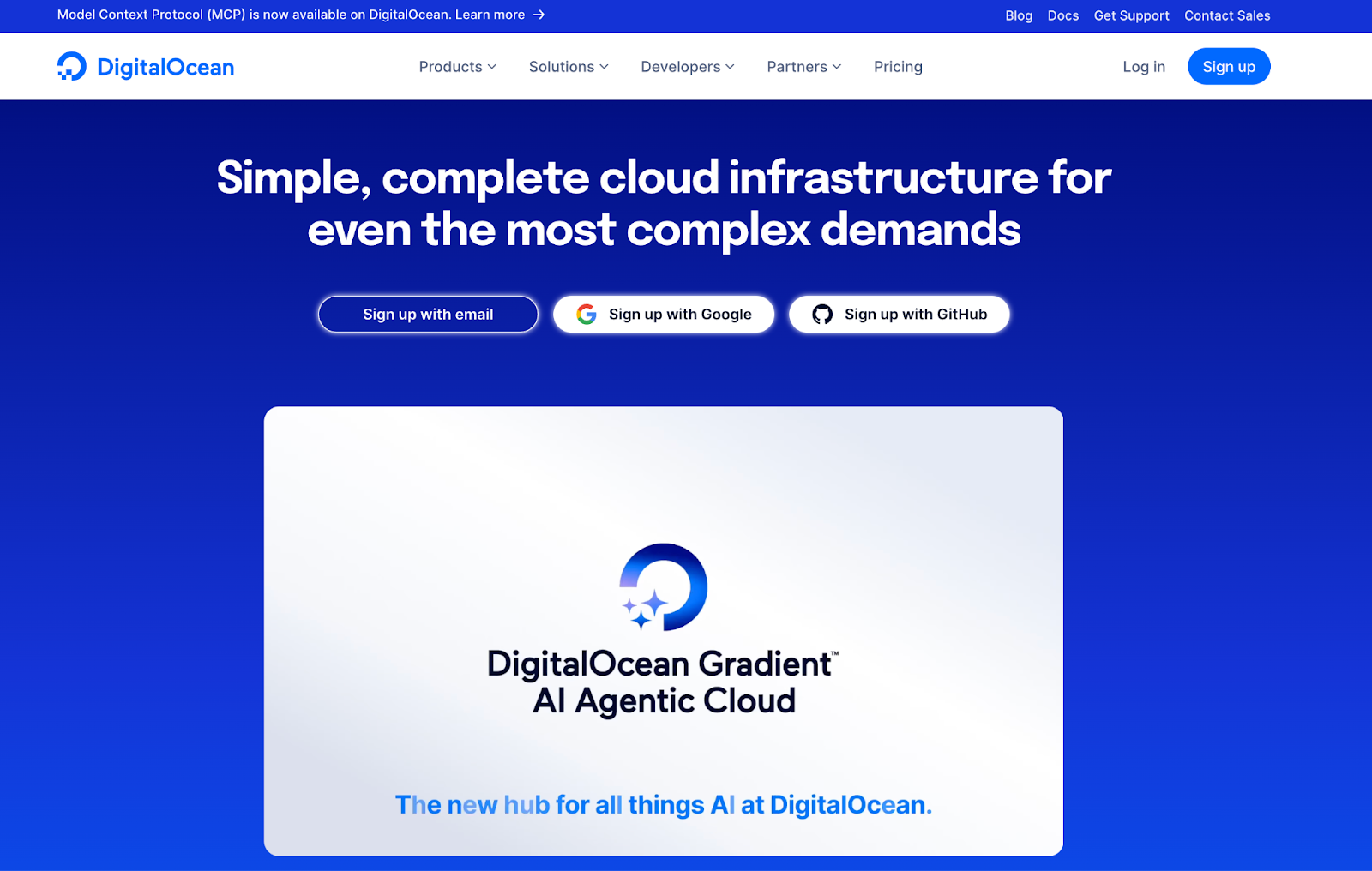
DigitalOcean’s serverless GPU offerings are available through the DigitalOcean Gradient™ AI Agentic Cloud, providing a wide variety depending on how much control and customization you want over your AI inference workflows. The Gradient AI Platform provides custom knowledge source integration, traceability, and versioning, along with serverless inference features for unified model access, autoscaling, and access to Anthropic, OpenAI, and Meta models. You can also access DigitalOcean’s wide range of tutorials to help you get started with AI application development and learn how to spin up serverless GPU workloads.
Available GPUs: NVIDIA RTX 4000 Ada Generation, RTX 6000 Ada Generation, L40S, HGX H100, HGX H200, AMD Instinct™ MI300X, MI325X
Pricing: Usage-based with unified API billing
2. Azure Container Apps
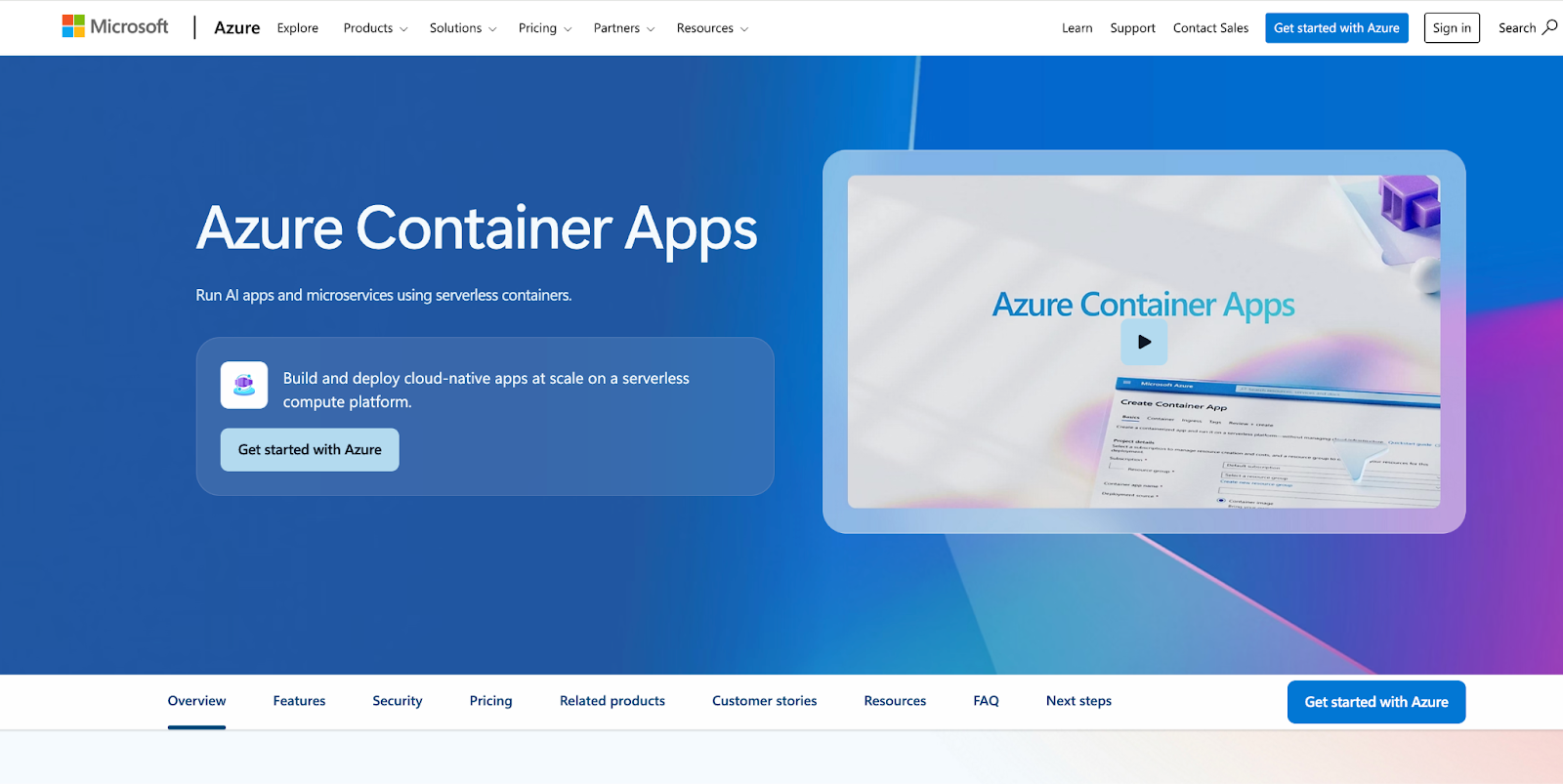
Microsoft announced serverless GPU support for Azure Container Apps in 2024, enabling you to access NVIDIA GPUs for real-time and batch inference, machine learning, high-performance computing, and big data analytics. The service supports automatic serverless scaling, built-in data governance, cold starts of 5 seconds, and a middle-layer for AI development, where you can host serverless APIs from the Azure model catalog or import your own AI models. There is also support for NVIDIA NIM microservices, which can help run AI models and support agentic AI workflow development.
Available GPUs: NVIDIA T4, A100
Pricing: Usage-based with per-second pricing
3. Baseten
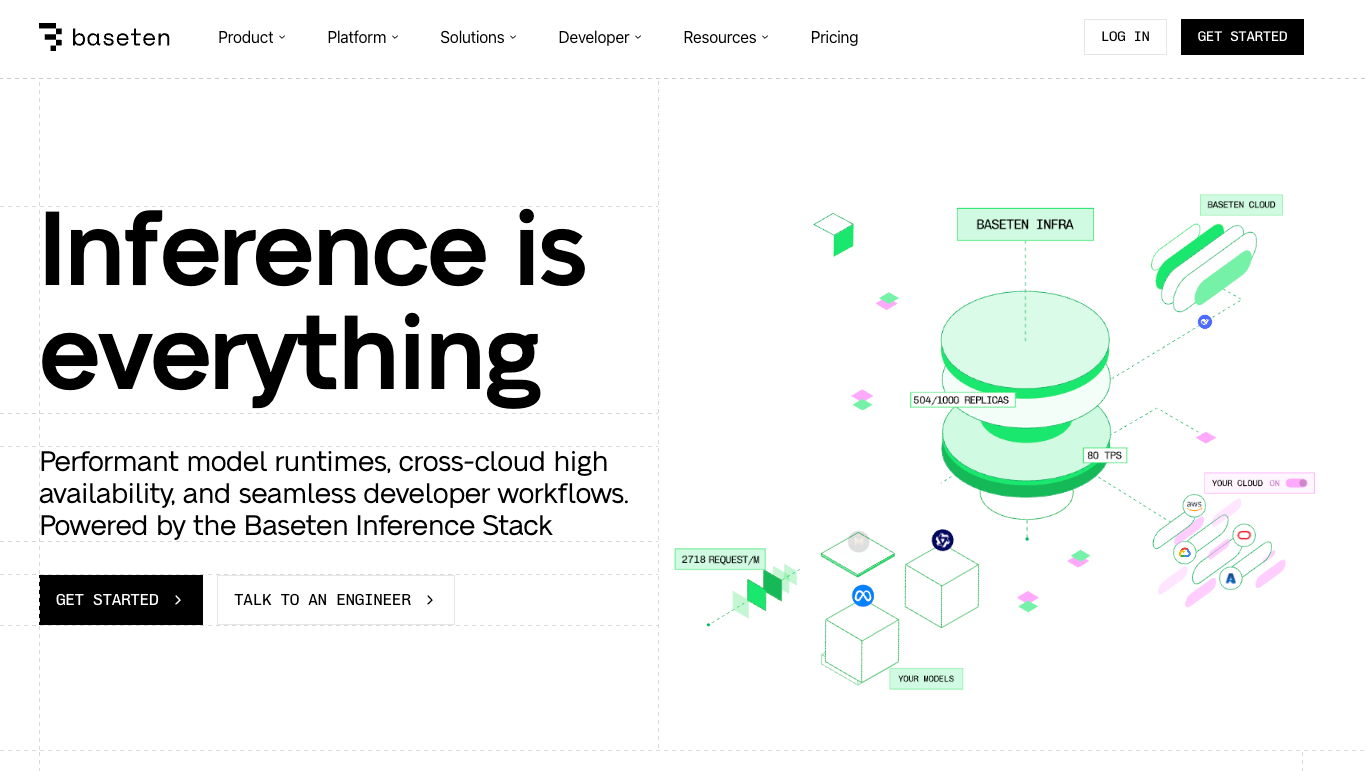
Baseten is designed to support model serving and inference and is best suited for developer workflows and custom model deployments. Its main framework, Truss, and built-in CLI let you configure and deploy your models with GPUs through a YAML configuration file. This feature lets you define specific configuration specifications, such as autoscaling settings. Its cold starts typically run between 8 and 12 seconds. You can also access pre-optimized models from GPT, Qwen3, DeepSeek, and LlaMA.
Available GPUs: NVIDIA T4, A10G, L4, A100, H100, and B200
Pricing: Usage-based with per-minute pricing
4. Google Cloud Run
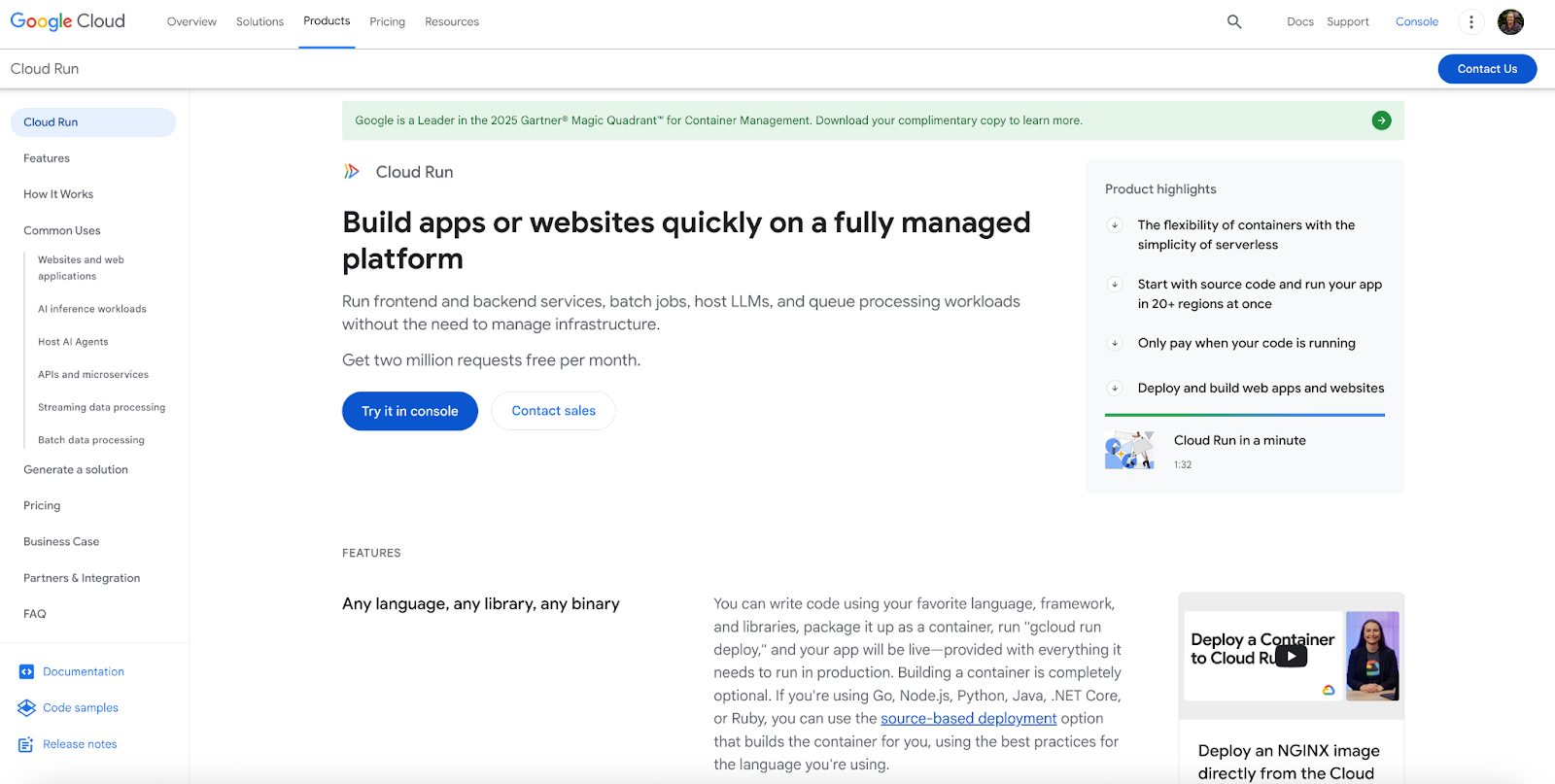
Google’s Cloud Run is a serverless runtime for running front-end and back-end services, queuing processing workloads, and hosting LLMs without the underlying infrastructure management. The service comes with autoscaling, support for any language, framework, or library, automated container image building (without the need for Docker), direct VPC connectivity, batch processing capabilities, and cold starts between 4-6 seconds. In addition to LLM hosting, you can use it to run AI agents, inference workloads, or compute-intensive use cases, such as on-demand image recognition, 3D rendering, or video transcoding.
Available GPUs: NVIDIA L4
Pricing: Pay-per-use with per-second pricing
5. Modal
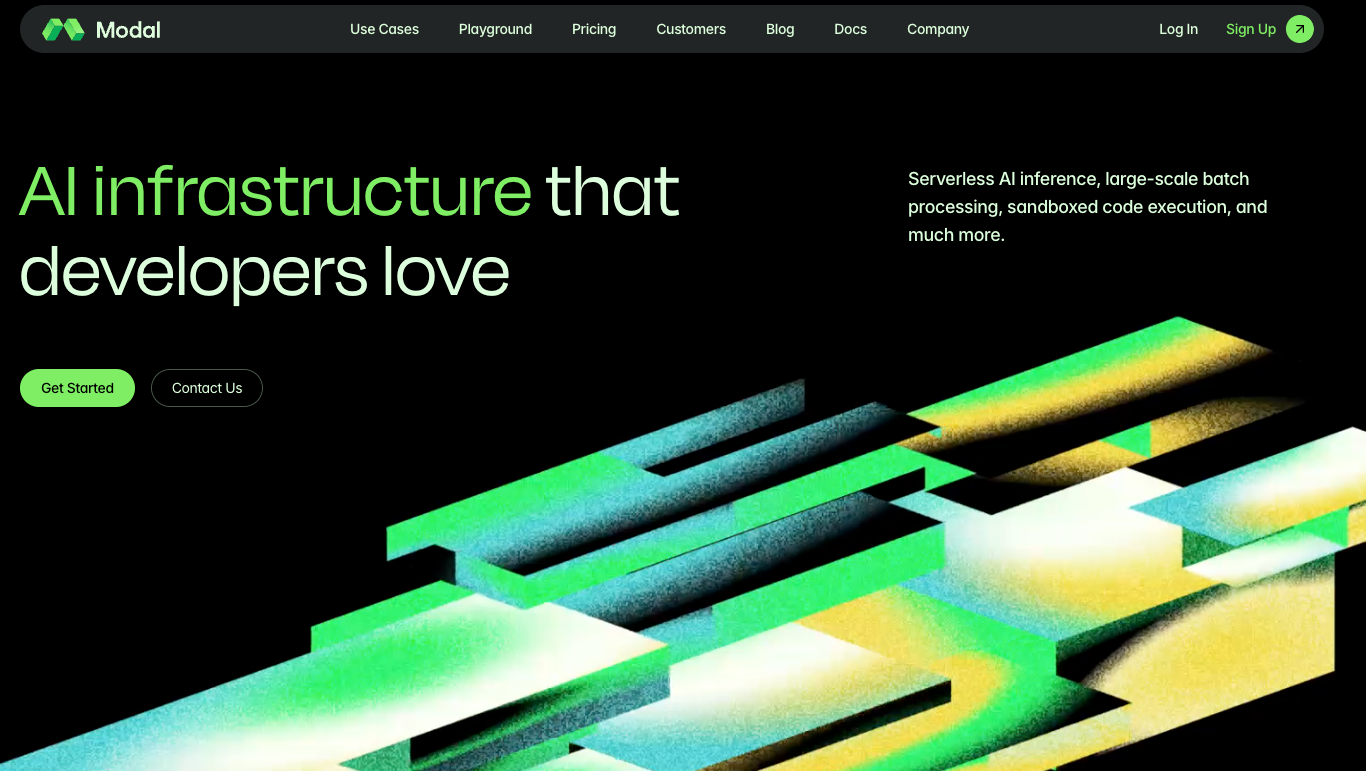
Designed around flexible, code-first deployments, Modal allows you to run Python code in the cloud. This enables detailed control over your serverless GPU implementations without any infrastructure management requirements. It offers an extensive Python SDK, automatic containerization, free monthly credits, and a default scale-to-zero setup. Its cold starts are between approximately 2-4 seconds. You can also access LLMs (LlaMA), along with AI models for audio generation (Whisper), and image generation (Stable Diffusion).
Available GPUs: NVIDIA T4, L4, L40S, A10, A100, H100, H200, and B200
Pricing: Usage-based with per-hour pricing
6. Replicate
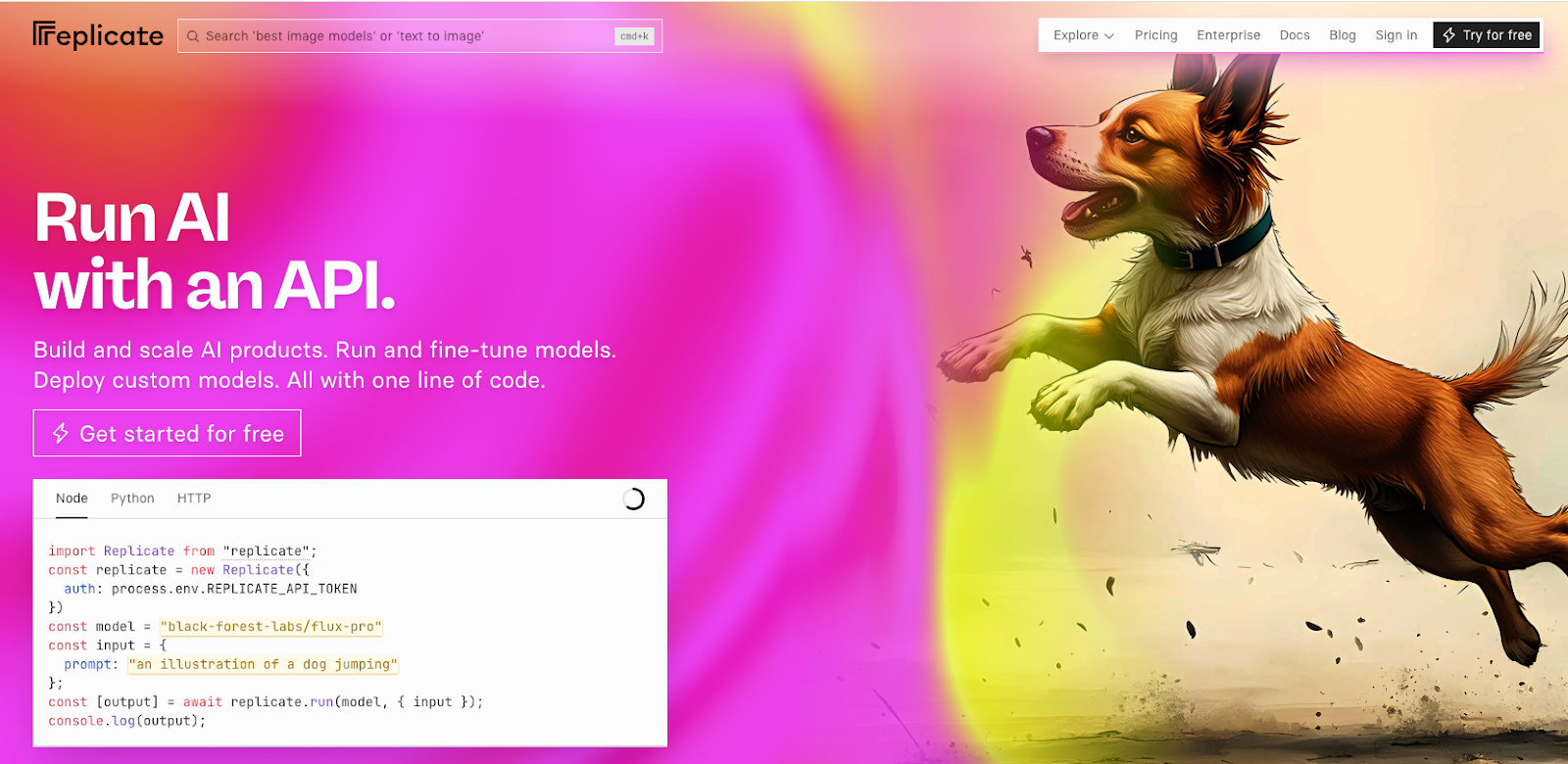
Replicate provides capabilities to run a large assortment of pre-trained AI models via a REST API. Its an open source tool, Cog, can help with containerization and make model and inference deployment much easier for experimentation, demos, image and speech generation, and more. You can also deploy custom models via Replicate’s web and training UIs. Pretrained models will abstract serverless GPU details and require no setup to run. Custom models allow you to specify any GPUs you’d like to use, but you may see cold starts of up to 1 minute.
Available GPUS: NVIDIA T4, A40, A100, L40S, H100
Pricing: Usage-based; per-second pricing for both public and private models
7. RunPod
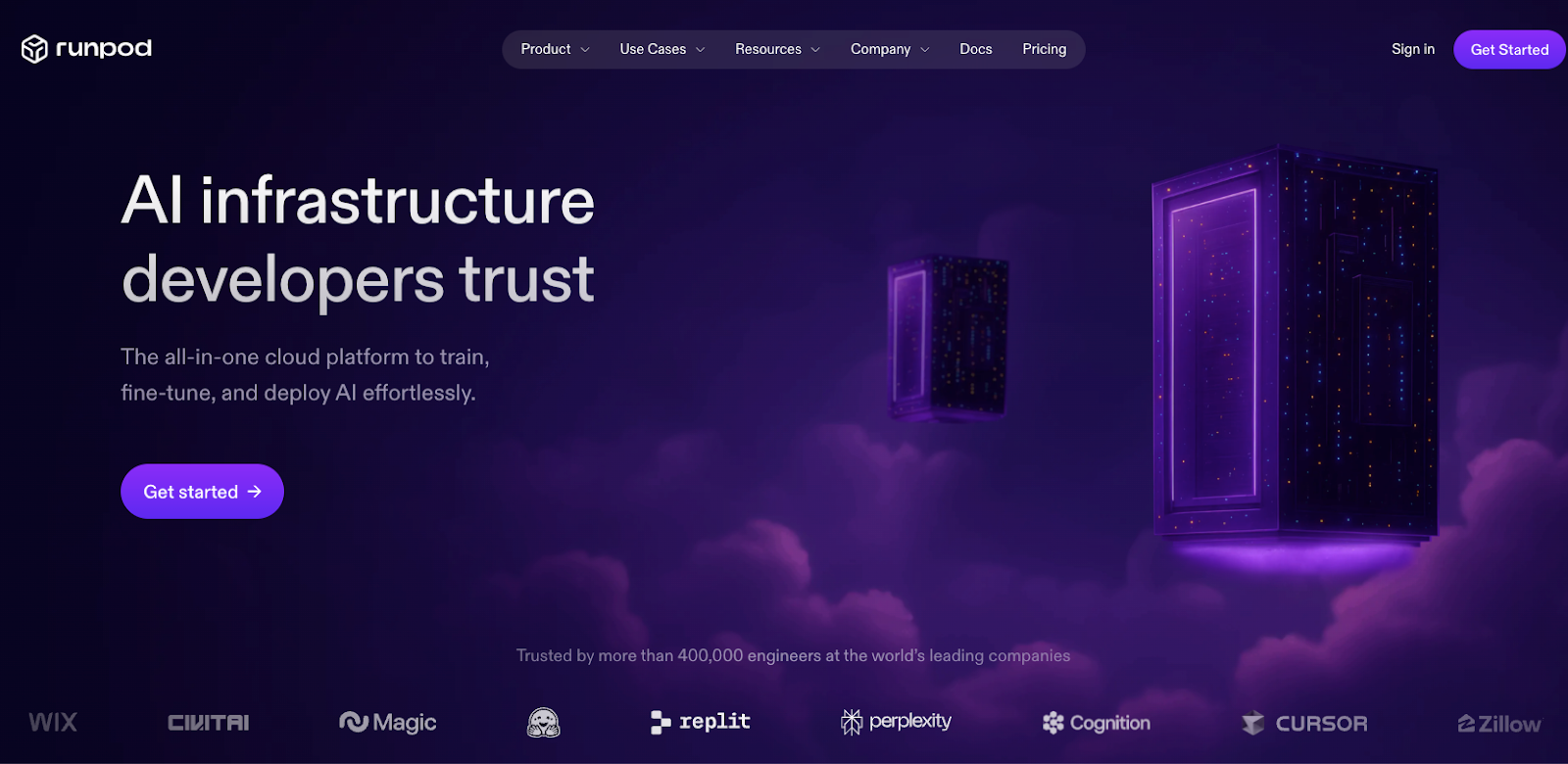
RunPod offers several different deployment options for custom endpoints: pre-built endpoints with commonly used AI models (LLaMA, SDXL, Whisper), implementing your own functions, and support for Hugging Face models in the cloud. RunPod also allows direct GPU access, runtime control, and persistent storage options if you want to configure and customize your hardware over time. For cold starts, approximately 48% of deployments have a spin-up time of less than 200ms.
Available GPUs: NVIDIA H100, H200, B200, L40S, RTX 4000, RTX 2000
Pricing: Usage-based; per-second pricing
Practices to improve serverless GPU performance and cost-efficiency
As with any type of computing deployment, keep an eye on resource usage and overall costs to ensure your workloads are running smoothly and you’re not surprised when you receive your monthly invoice. Here are a few best practices you can implement to ensure performance and keep costs in check:
Match GPU type to workload
Different GPUs are better suited for specific tasks. Some are designed for serverless inference tasks, while others are better for large-scale data training. Figuring out what tasks are best suited for specific GPUs means you aren’t using up unnecessary GPU resources and paying for more GPU power than needed.
Reduce cold start times
Cold starts can increase costs and latency for AI use cases, especially because GPUs take a long time to spin up once they’re needed. You can reduce overall cold start times by having a pool of ready-to-use instances, streamlining models and code for faster loading, reducing package size, and determining optimal timeout settings.
Monitor resource usage
This can help with both performance and cost, but tracking how much GPU power you use and how much you spend on serverless platforms can give you a better idea of what resources you actually need. Metrics to track include usage percentage, VRAM, memory bandwidth, kernel execution time, and inference latency. You’ll know how much computing power specific projects or models need, allowing you to adjust resources based on usage patterns±and see if this helps with overall costs. Certain providers will also allow you to set instance maximums and budget alerts to notify you when you have hit those designated thresholds.
Employ data management
Efficiently handling and managing data can help reduce processing time and overall costs. You can reduce processing time by caching often-used datasets or model weights, using local SSDs for temporary storage, or positioning data near compute resources. With AI models, you’ll want to spend time pruning data sets, removing duplicate data, and monitoring model size and weight over time.
Resources
Build Real-Time AI Agents with Gradient AI Platform and Serverless Functions
Serverless Inference with the DigitalOcean Gradient AI Platform
Using DigitalOcean’s Serverless Inference (and Agents) with the OpenAI SDK
Serverless GPU platform FAQs
What are serverless GPU platforms for AI inference? Serverless GPU platforms provide AI inference workloads with scalable GPU computing power without needing to manage any of the associated hardware or underlying infrastructure. It brings the benefits of simplified provisioning, increased development speed, and a pay-per-use pricing model.
How do serverless GPU platforms auto-scale inference workloads? Autoscaling is a key component of serverless GPU computing. It is designed to respond to specific functions, deploy GPUs to support said functions, and monitor GPU usage over time to scale as needed. Its specific implementation will vary across providers, but it can be done through concurrency-based scaling, utilization-based scaling, backlog-based scaling, or scale-to-zero.
What are the main benefits of serverless GPU for AI inference versus dedicated GPU servers? Having serverless GPUs for AI inference can bring benefits in terms of development speed, simplified provisioning and autoscaling, and a pricing model that allows you to pay for what you use. Dedicated GPU servers can provide greater hardware control and customization, ensure resource availability, and support more static workloads.
What pricing models are used in serverless GPU platforms? Most serverless GPU platforms charge based on usage and time. Providers will either charge for each GPU instance per minute or per second.
Build with DigitalOcean’s Gradient AI Platform
DigitalOcean Gradient AI Platform makes it easier to build and deploy AI agents without managing complex infrastructure. Build custom, fully-managed agents backed by the world’s most powerful LLMs from Anthropic, DeepSeek, Meta, Mistral, and OpenAI. From customer-facing chatbots to complex, multi-agent workflows, integrate agentic AI with your application in hours with transparent, usage-based billing and no infrastructure management required.
Key features:
-
Serverless inference with leading LLMs and simple API integration
-
RAG workflows with knowledge bases for fine-tuned retrieval
-
Function calling capabilities for real-time information access
-
Multi-agent crews and agent routing for complex tasks
-
Guardrails for content moderation and sensitive data detection
-
Embeddable chatbot snippets for easy website integration
-
Versioning and rollback capabilities for safe experimentation
Get started with DigitalOcean Gradient AI Platform for access to everything you need to build, run, and manage the next big thing.
About the author
Jess Lulka is a Content Marketing Manager at DigitalOcean. She has over 10 years of B2B technical content experience and has written about observability, data centers, IoT, server virtualization, and design engineering. Before DigitalOcean, she worked at Chronosphere, Informa TechTarget, and Digital Engineering. She is based in Seattle and enjoys pub trivia, travel, and reading.
- Table of contents
Get started for free
Sign up and get $200 in credit for your first 60 days with DigitalOcean.*
*This promotional offer applies to new accounts only.